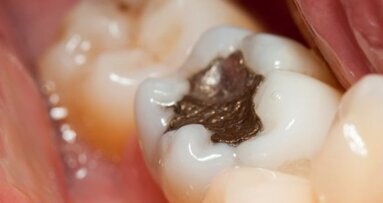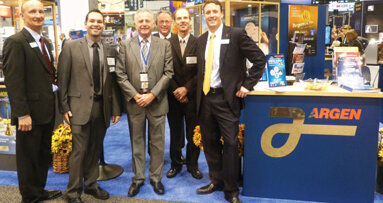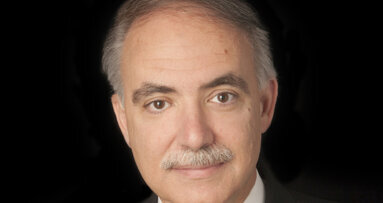If you haven’t been paying attention, the United States Environmental Protection Agency (EPA) is in the process of preparing a federal rule to regulate dental offices on best management practices (BMPs) for dental facilities, which will include the required installation of amalgam separators. The proposed federal rule is scheduled to be released to the public around Nov. 1, with the final rule scheduled around Nov. 1, 2012.
The American Dental Association (ADA) issued BMPs as far back as 2003, with the most recent update in November of 2007. BMPs focus on the proper management of amalgam wastes within the dental facility. Amalgam waste is the contact and non-contact amalgam from expended amalgam capsules, unused scraps, chairside traps, vacuum pump filters and amalgam separator collection containers. BMPs seem to be common sense management issues; however, not everyone understands the implications of not following the simple protocols.
Because amalgam is composed of 50 percent mercury by weight, placing amalgam scraps or extracted teeth with amalgam restoration in bio-hazardous waste provides a direct line to the environment. Bio-hazardous waste is incinerated, releasing the mercury contained in the amalgam into the atmosphere. Some municipalities incinerate their trash while others use landfills, but in either case, the mercury is made available to enter into the environment.
Flushing amalgam down the drain places responsibility on the local sewer authority to remove the mercury before it can discharge to lakes, rivers and streams. Treatment plants are not designed to remove specific chemicals — typically only solids are removed — and thus a path is provided for mercury to enter the environment.
Amalgam separators are devices that capture solid particles, including amalgam from dental vacuum lines, prior to dental facilities discharging. Required statewide in 10 states and in many municipalities, these devices are the central part of the proposed EPA rule.
The EPA focus is on any dental facilities that place or remove amalgam. Mostly installed near the vacuum pump, amalgam separators have proven effective at reducing mercury loads to sewage treatment plants around the world by 50 percent or more. Solid sludge from treatment plants is incinerated, land filled or land applied, offering the mercury contained in the sludge to be environmentally available.
The ADA during the last decade has provided several articles in the ADA Journal relating to amalgam separators, providing test data and advice for installation and purchase of the systems. There are also several other recourses that can be found with a web search.
The first step is to be aware of the forthcoming regulation, as the EPA rule is a federal standard, and as such, failure to comply with this rule is a violation of federal law, which is not something to be taken lightly. Do a little research through the web and ask your dealers what they recommend.
With more than 30,000 amalgam separators already installed in the United States, there is a sales and service history with these devices that can assist in the purchase of an amalgam separator when your time comes.
About the author
Al Dube is national sales manager of SolmeteX.
For decades, dentists around the world have profited from high demand for dental clinics by selling to a dental support organisation (DSO), entering ...
Pop quiz: Do you know — right now — the biggest pulse points affecting your business in 2014? If your answer is “Sure, I can figure that ...
The clock is ticking. In 2025, your website is your front desk, your waiting room and your first impression. If your site is more than four years old — ...
As the dentist, you are the top revenue producer in your practice, but as much as you try, you can’t wear all the hats. Your practice wouldn’t ...
There are two types of consistency: action and motivation. Consistency in action is just what it sounds like. Do the same thing every time, no matter what ...
NEW YORK, NY, USA/LEIPZIG, Germany: The US government should review its existing amalgam regulations, an advisory panel of the Food and Drug Administration ...
NEW YORK, N.Y., USA: The American Academy of Cosmetic Dentistry (AACD), the world’s largest non-profit membership association dedicated to the art and...
NEW YORK, N.Y., USA: An orthodontic practice management leader, Ortho2, has announced the release of Practice Connect, a new, office-specific app that ...
In an effort to continually bring more value to your dental practices, the Argen Corporation and Henry Schein have partnered together, combining the ...
WASHINGTON, D.C., USA: The American Dental Association (ADA) supports the recent policy statement of the American Public Health Association (APHA) affirming...
Live webinar
Wed. 14 January 2026
12:00 PM EST (New York)
Dr. Théo Laplane, Dr. Robert Gottlander DDS
Live webinar
Fri. 16 January 2026
12:00 PM EST (New York)
Live webinar
Mon. 19 January 2026
1:00 PM EST (New York)
Philipp Kopp, Michael Seeber
Live webinar
Thu. 22 January 2026
9:00 AM EST (New York)
Prof. Judith Jones D.D.S; M.P.H., Prof. Kakuhiro Fukai D.D.S., Ph.D, Dr. Bathsheba (Bethy) Turton
Live webinar
Thu. 22 January 2026
2:00 PM EST (New York)
Dr. Nicola M. Grande DDS, PhD
Live webinar
Wed. 28 January 2026
8:00 AM EST (New York)
Live webinar
Wed. 28 January 2026
11:00 AM EST (New York)
Prof. Dr. Jan-Frederik Güth



 Austria / Österreich
Austria / Österreich
 Bosnia and Herzegovina / Босна и Херцеговина
Bosnia and Herzegovina / Босна и Херцеговина
 Bulgaria / България
Bulgaria / България
 Croatia / Hrvatska
Croatia / Hrvatska
 Czech Republic & Slovakia / Česká republika & Slovensko
Czech Republic & Slovakia / Česká republika & Slovensko
 France / France
France / France
 Germany / Deutschland
Germany / Deutschland
 Greece / ΕΛΛΑΔΑ
Greece / ΕΛΛΑΔΑ
 Hungary / Hungary
Hungary / Hungary
 Italy / Italia
Italy / Italia
 Netherlands / Nederland
Netherlands / Nederland
 Nordic / Nordic
Nordic / Nordic
 Poland / Polska
Poland / Polska
 Portugal / Portugal
Portugal / Portugal
 Romania & Moldova / România & Moldova
Romania & Moldova / România & Moldova
 Slovenia / Slovenija
Slovenia / Slovenija
 Serbia & Montenegro / Србија и Црна Гора
Serbia & Montenegro / Србија и Црна Гора
 Spain / España
Spain / España
 Switzerland / Schweiz
Switzerland / Schweiz
 Turkey / Türkiye
Turkey / Türkiye
 UK & Ireland / UK & Ireland
UK & Ireland / UK & Ireland
 International / International
International / International
 Brazil / Brasil
Brazil / Brasil
 Canada / Canada
Canada / Canada
 Latin America / Latinoamérica
Latin America / Latinoamérica
 China / 中国
China / 中国
 India / भारत गणराज्य
India / भारत गणराज्य
 Pakistan / Pākistān
Pakistan / Pākistān
 Vietnam / Việt Nam
Vietnam / Việt Nam
 ASEAN / ASEAN
ASEAN / ASEAN
 Israel / מְדִינַת יִשְׂרָאֵל
Israel / מְדִינַת יִשְׂרָאֵל
 Algeria, Morocco & Tunisia / الجزائر والمغرب وتونس
Algeria, Morocco & Tunisia / الجزائر والمغرب وتونس
 Middle East / Middle East
Middle East / Middle East





























































To post a reply please login or register